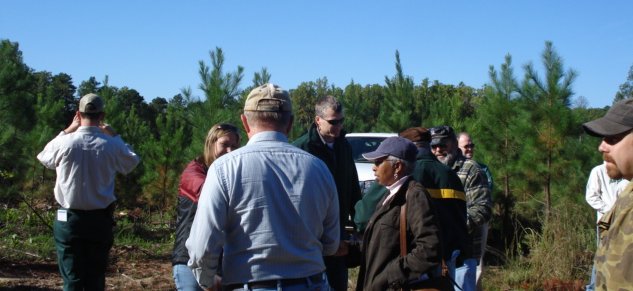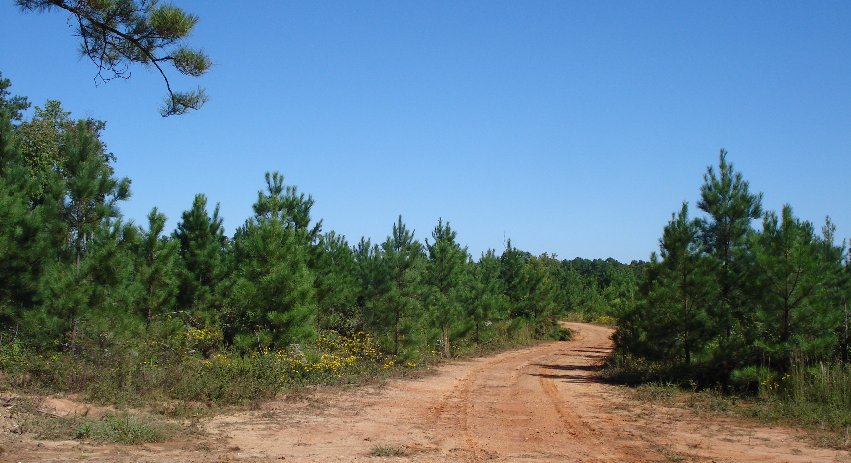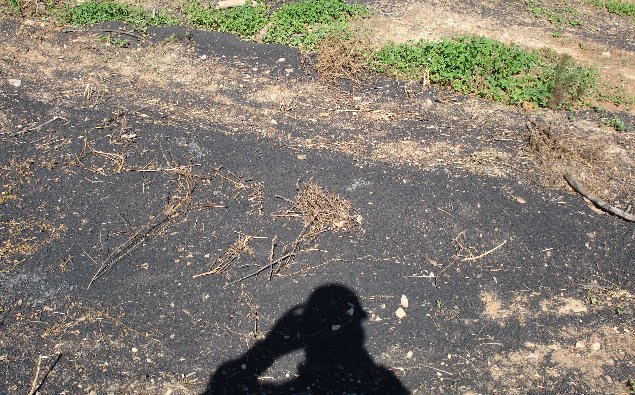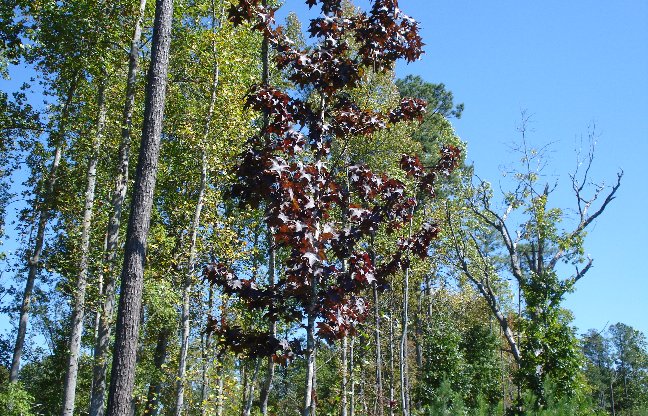One of the great services provided by the State of Virginia is ongoing landowner education. The courses I like are usually hosted by Virginia Tech and I prefer to go to the Southern Piedmont Research Station near Blackstone, VA because that is close to my forest land. Forestry is very localized in terms of soils and climates. I prefer to share the experience with people who work with my kind of tree in similar climates and soil types.
Below is a discussion of precommercial thinning. The Dept of Forestry recommends it to keep the forests healthy. I already did mine.

I attended a field day that included talks on forest road maintenance, carbon credits & pond management, as well as a tour of a local saw mill.
The instructors and my fellow landowners are always very nice to me, but I am strange to them with my northern accent and unusual background. Most of the other landowners are old south & rural and I feel always in the presence of Andy Griffith or Billy-Bob Thorton. They inherited their land, which has often been in their families for many generations.
As the older generation dies off, farms and timberlands are left to kids who have moved away to the cities. They often divide it up among the heirs and sell it off. This leads to fragmentation of the forests. 100 acres in one parcel is not the same as 100 acres divided in to ten or twenty fragments. You really cannot practice forestry on land less than forty acres. We also talked about conservation easements, which might reduce this trend. A conservation easement lowers taxes in return for a contract never to develop the land. It stays in forest or farm. This can be a good thing.

I also went down to my forest to check on the biosolids application. The workers had just finished. There is a little smell to the biosolids, but not that much. The bigger effect is that the heavy machinery crushes down the vegetation, including some of my trees. It would be better to apply biosolids first and then do pre-commercial thinning. There is not that much damage really. The rows are far apart and unless the trees are actually run over by the tires there is a good chance they will recover.
My forest is looking very good in terms of spacing and tree health. There is a debate re how close the trees should be. The closer spacing provides more wood at first, but lower quality. The closely spaced trees are also more stressed and in more danger from insects. Wildlife also does better with more widely spaced trees. Anyway, my choice is more spacing. I am interested to see how much fertilization does for the trees. Most forest owners do not fertilize at this stage and I am one of the first in the area to use biosolids at this stage of the lifecycle. Virginia Tech has studied the applications of biosolids in Southside Virginia. I went to their seminar last year and I trust them, so I am doing what they recommend. We did 132 acres of the 2004 generation. I probably should have left a control plot for comparison.
Below are what the biosolids look like. These particular pellets produced by anaerobic digestion. Some are lime stabilized and in more liquid form. Biosolids are a great circle of life thing – from flush to farm. Wastes are applied to land to produce more growth and life. Virginia Tech has found no significant amount gets into the water supply, even when applied massively beyond what we usually do. People complain about the smell, but I walked all over the place and hardly noticed them. It is a mild fertilizer smell that will go away in a couple of weeks. BTW – this was the place where they piled them for spreading. The actual spread is much thinner.

One side benefit of the application was the paths the machines made through the brambles. I was able to get to places on the land where I never set foot before. In fact, I was so beguiled by the new paths that I stayed too long and almost didn’t get back home in time.
Below is a sweet gum in its fall colors. They are pretty trees, but sort of like big weeds if you are trying to grow pine. This one is near the stream management zone and it is a natural part of the Virginia landscape, so we will let it to grow to old age and I will enjoy its color next fall too. It will be prettier each year.

